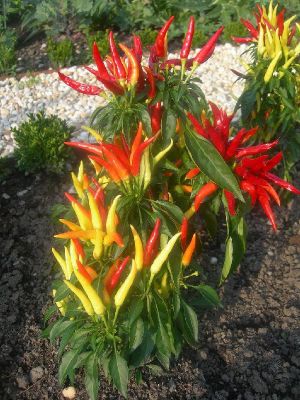Chili pepper

Chili peppers (also chile, chile pepper, chilli pepper, or chilli), from Nahuatl chīlli (Nahuatl pronunciation: [ˈt͡ʃiːlːi] (listen)), are varieties of the berry-fruit of plants from the genus Capsicum, which are members of the nightshade family Solanaceae, cultivated for their pungency. Chili peppers are widely used in many cuisines as a spice to add "heat" to dishes. Capsaicin and related compounds known as capsaicinoids are the substances giving chili peppers their intensity when ingested or applied topically. While chili peppers are (to varying degrees) pungent or "spicy", there are other varieties of capsicum such as bell peppers, which generally provide additional sweetness and flavor to a meal rather than "heat."
Chili peppers are believed to have originated somewhere in Central or South America. and were first cultivated in Mexico. After the Columbian Exchange, many cultivars of chili pepper spread around the world, used for both food and traditional medicine. This led to a wide variety of cultivars, including the annuum species, with its glabriusculum variety and New Mexico cultivar group, and the species of baccatum, chinense, frutescens, and pubescens.
Cultivars grown in North America and Europe are believed to all derive from Capsicum annuum, and have white, yellow, red or purple to black fruits. In 2019, the world's production of raw green chili peppers amounted to 38 million tons, with China producing half.()